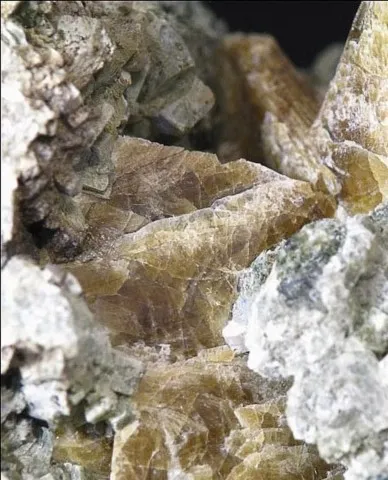MALAYAITE
Class : Silicates
Subclass : Nesosilicates
Crystal system : Monoclinic
Chemistry : CaSnSiO5
Rarity : Uncommon
Malayaite is a silicate of tin and calcium found in stanniferous skarns, where it is believed to come from the high-temperature hydrothermal alteration of cassiterite. This mineral accompanies the classic skarn minerals : wollastonite, pyroxene and andratite in particular. It owes its name to its location of discovery : Shungei Lah in Malaysia. Malayite forms sharp crystals, colorless or pale cream to greenish gray, sometimes bright orange.
Main photo : Malayaite from Ash Mountain, McDame, British Columbia, Canada © Dakota Matrix
Malayaite in the World
Twinning
No twin known for this mineral species.
Fakes and treatments
No fakes recorded for this mineral species.
Hardness : 3.5 to 4
Density : 4.3
Fracture : Undetermined
Streak : White
TP : Translucent to transparent
RI : 1.764 to 1.801
Birefringence : 0.034 to 0.036
Optical character : Biaxial -
Pleochroism : None
Fluorescence : Yellow-orange to pale yellow-green
Solubility : Hydrochloric acid, hydrofluoric acid
Magnetism : NoneRadioactivity : None

